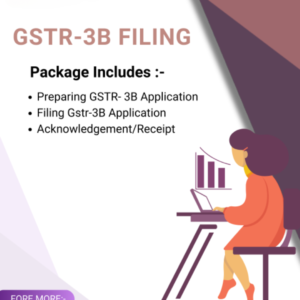What is GST?
The Goods and Services Tax (GST) is an indirect tax levied on the supply of goods and services in India. It replaced multiple indirect taxes like excise duty, VAT, service tax, and more, unifying the country’s tax system under one umbrella.
Who is Required to Register for GST?
Turnover Threshold:
General Category States: Businesses with an annual aggregate turnover exceeding ₹40 lakhs must register for GST.
Special Category States: Businesses in North-Eastern states, Himachal Pradesh, Uttarakhand, Jammu & Kashmir, etc., must register if their turnover exceeds ₹20 lakhs.
Inter-State Supplies:
Businesses making taxable supplies from one state to another must register for GST, regardless of turnover.
E-commerce Operators:
Operators facilitating the supply of goods/services through their platforms must register, even without physical presence in India.
Casual Taxable Persons:
Individuals/entities making occasional taxable supplies (even below threshold) must also register.
Benefits of GST Registration
Compliance with Law:
Ensures adherence to tax regulations and avoids penalties.
Input Tax Credit (ITC):
Enables businesses to claim credit for GST paid on purchases, reducing tax liability.
Business Credibility:
Enhances reputation and trust with customers and suppliers.
Access to Wider Markets:
Opens business opportunities across states, eliminating tax barriers.
Streamlined Compliance:
Simplifies tax filing with a single tax system across India.
Downsides of Not Being GST Registered
Financial Penalties:
If unregistered, you’ll still be liable to pay GST on taxable supplies, with heavy penalties.
Business Obstacles:
Limited customer base, as larger businesses prefer dealing with GST-registered suppliers for ITC claims.
Compliance Issues:
Scrutiny and retrospective registration can lead to complications.
Reputational Risk:
Being unregistered may give your business an unprofessional image.
QRMP Scheme (Quarterly Return and Monthly Payment)
Eligibility:
Applicable to businesses with turnover up to ₹5 crore in the preceding financial year.
Benefits:
Reduced Filing Frequency: GSTR-1 and GSTR-3B can be filed quarterly instead of monthly.
Spaced Out Tax Payments: Tax payments are made monthly based on self-assessment or fixed amount.
Steps After GST Registration
Display and Communicate GST Details:
Display your GSTIN on your business cards, invoices, and website to ensure customers and authorities know you are GST-registered.
Understand Return Filing Requirements:
Familiarize yourself with the required GST returns (e.g., GSTR-1, GSTR-3B) and their due dates to avoid penalties.
Start Issuing GST-Compliant Invoices:
Ensure invoices meet GST requirements, including GSTIN, HSN code, tax rate, and tax amount.
Track and Claim Input Tax Credit (ITC):
Maintain records of your purchases and input tax paid, and file timely claims for ITC.
Maintain Accurate Accounts:
Keep proper records of sales, purchases, tax payments, and ITC claims for simplified audits.
Consider Additional Procedures:
E-invoicing: If applicable, generate e-invoices for certain transactions.
Digital Signature Certificate (DSC): May be required for online interactions.
Consult a Tax Advisor:
Seek professional guidance to ensure compliance and navigate GST requirements effectively.
By following these steps and registering for GST, you can ensure smooth operations for your business, stay compliant with tax regulations, and reap the benefits of Input Tax Credit and market expansion.






Reviews
There are no reviews yet.